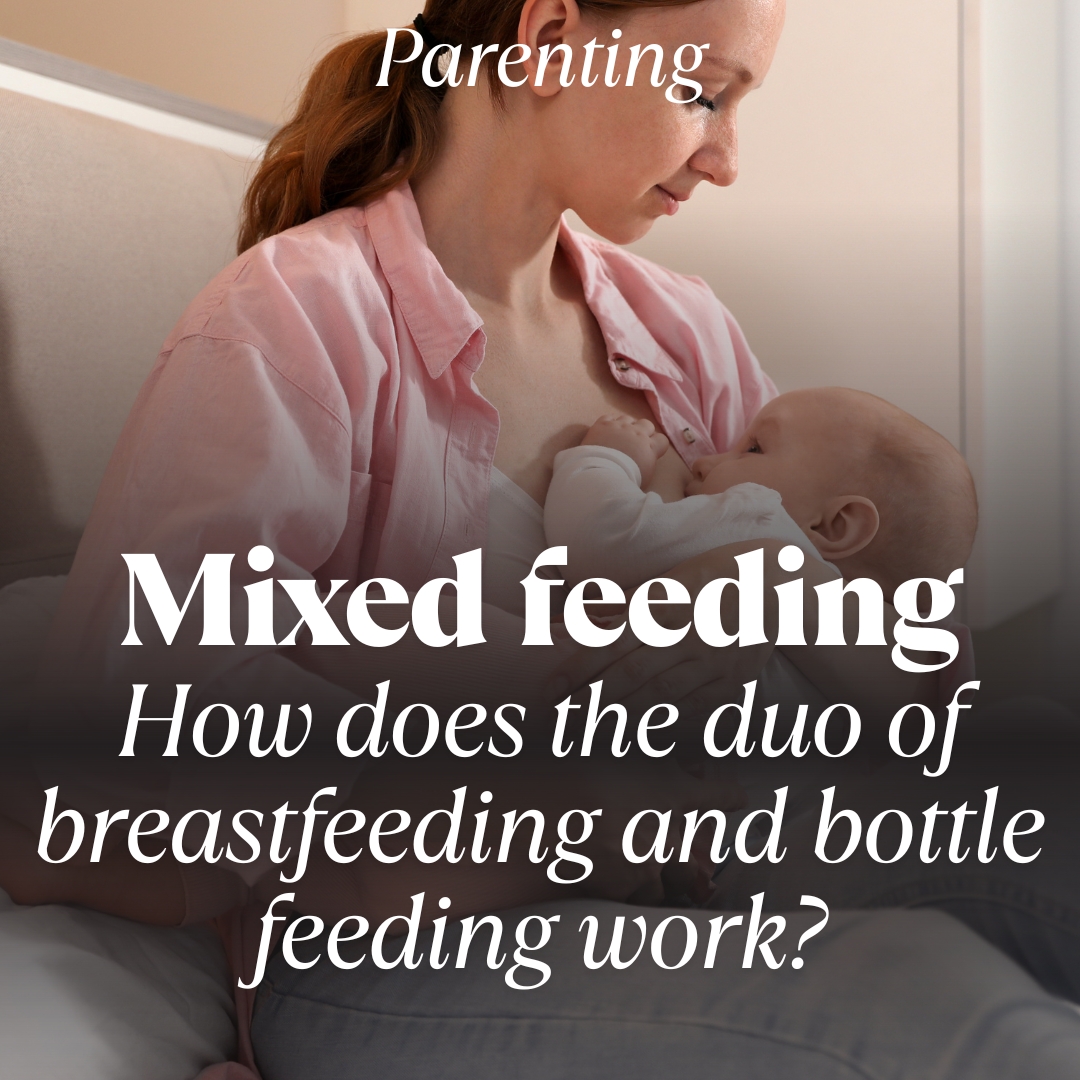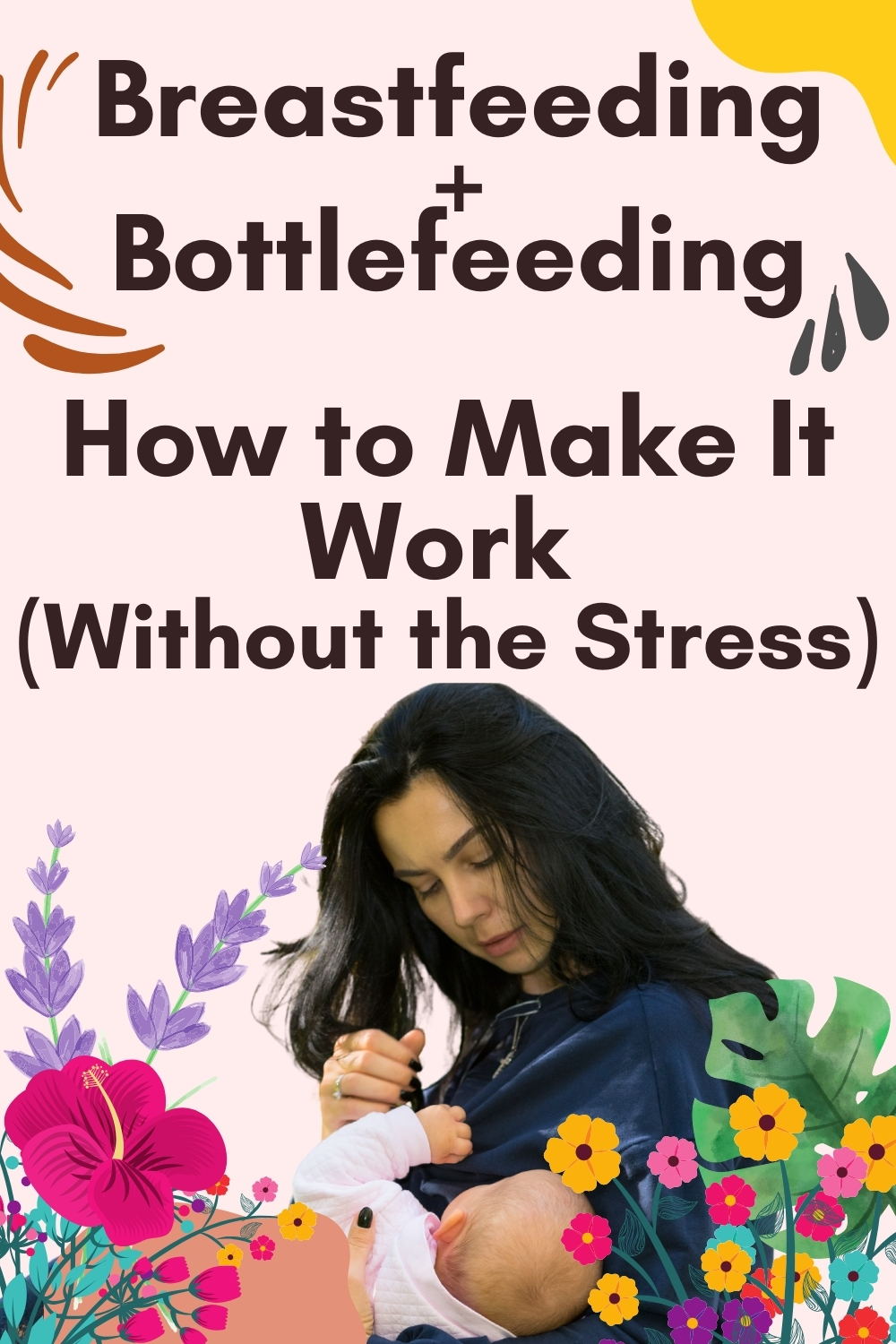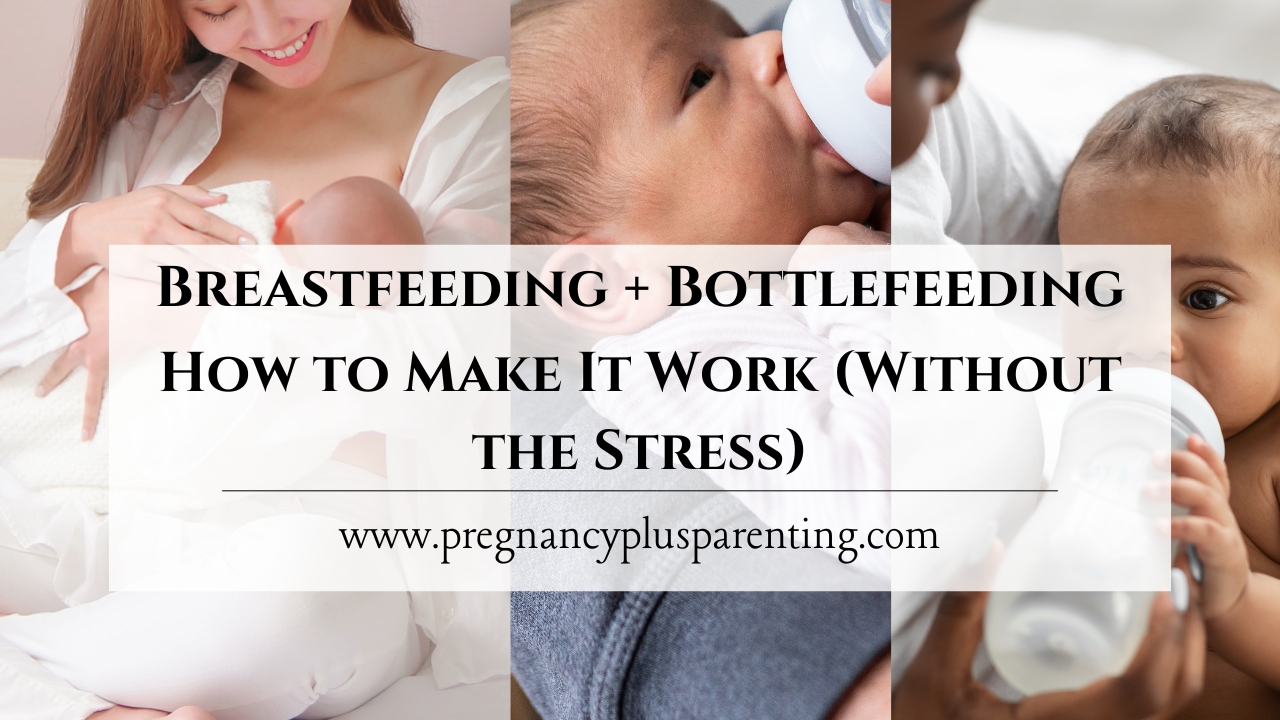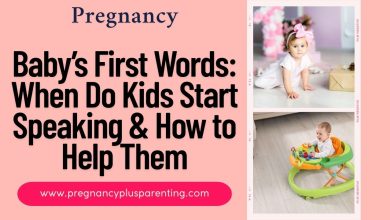Breastfeeding + Bottlefeeding: How to Make It Work (Without the Stress)
Have you heard of mixed feeding? What is it and who is it suitable for?
Are you struggling with anatomical or hormonal issues? Is your baby born premature and lacking the strength to breastfeed successfully?
Are you experiencing breastfeeding-related discomfort that’s making your life miserable? Are your breasts producing too little milk ?
Or would you like to start your career earlier?
Should dad be more involved in feeding so you can also sleep in now and then? Or do you prefer not to breastfeed in public?
Mothers are sometimes put under a lot of pressure to breastfeed , but ultimately it is the mother’s decision and it should be respected.
Mixed feeding is a compromise solution that allows breastfeeding mothers to be more flexible and feed their children with breast milk AND breast milk substitute.
After all, there is excellent PRE-food available these days, isn’t there?
A look at the results of the baby food tested by Ökotest in 2021, which are briefly presented below, unfortunately reveals some shocking findings…
And what do you do if your baby has symptoms such as gas, constipation, or difficulty drinking? How do you choose the right baby food?
In this article, I will give you some basic tips to keep in mind when using mixed feeding, as well as a place where you can find professional support and advice regarding bottle feeding.
Mixed feeding – The right to make your own decision

Considering how strongly it is emphasized that there is nothing better for babies than breast milk, choosing to mix milk might make you look like a shady mother.
The World Health Organization (WHO) recommends that babies be exclusively breastfed for at least the first six months of life. After all, breast milk is simply the best thing for the child.
But there are several reasons why women cannot or do not want to breastfeed fully.
Mothers know how frustrating it can be to cope with the challenges of postpartum recovery and breastfeeding.
Our society doesn’t really make things any easier for us, despite countless guides and information articles on the Internet.
When milk production isn’t working, mothers are usually encouraged not to give up. It seems to be frowned upon to ask for the right pre-milk.
But that shouldn’t be the case! Every mother and family has the right to choose their own path, the one that feels good and right.
So if you are interested in the concept of mixed feeding, don’t hesitate to discuss it with your lactation consultant .
To ensure a healthy breastfeeding relationship, not only your pediatrician, midwife, or lactation consultant should be involved in this decision, but also independent and certified bottle and formula consultants. Why?
Mixed feeding – infant formula tested
Infant formula is a profitable business and is therefore vigorously marketed and promoted to all babies and through many channels.
The various products are designed in a uniform manner, and the companies present themselves as partners of parents and the healthcare system.
However, conflicts of interest arise for the specialists and many infant formula products are contaminated with impurities and harmful substances, as Ökotest was able to determine in the laboratory.
Of a total of 16 products tested in 2021, only 6 infant formulas received the rating “good,” and with the rating “very good,” only two infant formulas are actually recommended.
Two-thirds of PRE diets were found to contain mineral oil, more specifically saturated mineral oil hydrocarbons (MOSH), which accumulate in the body, although the long-term consequences of this are still unclear.
Aromatic mineral oil hydrocarbons (MOAH) have even been discovered in one of the PRE foods, which include compounds suspected of causing cancer and genetic damage.
Neither MOAH nor MOSH have any place in pre-milk and it is up to the manufacturers to identify and eliminate sources of contamination that exist in production, such as lubricating grease on machines or pollutants in packaging materials.
What is particularly bad is that there are no legal requirements for PRE formula in this regard and although the problem of critical mineral oil levels has been known for years, there is no legal minimum value, not even for PRE milk for the youngest babies after birth.
In 2020, the Foodwatch association called on the Federal Minister of Food and Agriculture to withdraw from the market the infant milk products from Novalac, Rossmann, Humana and Nestlé that were contaminated according to laboratory results from the Chemical and Veterinary Investigation Offices (CVUA) in Stuttgart and Münster.
The executive director of Foodwatch makes it clear that the government is putting the business interests of manufacturers above the health protection of consumers, even infants.
Mixed feeding – seek advice from independent bottle feeding experts
Parents are often not only confused and overwhelmed by the large selection of industrially produced baby milk, but should also be alarmed and, in addition to their pediatrician and breastfeeding consultant, ideally turn to independent consultants for bottle and formula feeding.
FeS consultants have in-depth knowledge of bottle feeding, which is based on independent sources and is not under the influence of various companies and corporations.
The experts have a neutral attitude towards bottle feeding and maintain the priority of promoting breastfeeding.
Here parents can be sure to find the right advice for the right initial food.
You will be supported in determining the appropriate amount of liquid for your baby and in choosing the appropriate food for infant problems such as constipation, flatulence, spitting up, etc.
Mixed feeding – how much should you supplement? If you decide to use mixed feeding or breastfeeding-friendly supplementation , it’s advisable to consult an independent expert.
Mixed feeding – How does the duo of breastfeeding and bottle feeding work?

Mixed feeding experiences – Contrary to what some claim, it doesn’t necessarily mean that a baby will refuse the breast after tasting a bottle. In fact, some families have observed that the combination of breastfeeding and supplementary feeding works well, and the babies cope well with it.
Mixed feeding disadvantages – Of course, no bottle feeding can replace breast milk and through mixed feeding the little one absorbs fewer valuable ingredients from breast milk.
In addition, it can lead to problems such as colic and digestive problems, and there are also additional costs associated with purchasing bottles, teats, and powdered milk.
Therefore, it’s best to seek advice about your individual situation and that of your baby. There are a few general things to consider.
1. In the beginning, full breastfeeding is provided
First, you should establish a successful breastfeeding relationship before switching to the breast-bottle combination.
Of course, how long this takes varies from mother to mother and baby, but the average is six to eight weeks.
2. Milk production must be maintained
In milk production, demand determines supply.
This is one of the reasons why it is best to introduce mixed feeding only under the supervision of a professional, because if you breastfeed your baby less often (or pump less often), the amount of milk produced will also decrease and it can be very challenging to maintain control of milk supply.
If your baby refuses formula, you can pump and fill the bottle with breast milk. This way, your baby will be familiar with the taste, and only the bottle will be new to them.
3. First the breast, then the bottle
Even if you are worried that your baby is not getting enough from your breast and are therefore supplementing, always start feedings with breastfeeding first.
If your baby still shows signs of hunger after breastfeeding, such as sucking on your finger, continue feeding with a bottle.
It is best for your baby to drink one breast empty, because this way he or she also takes in the satiating hind milk and not just the watery foremilk, which is good as a thirst quencher.
4. Choose the right vacuum cleaner
There is a lot of choice when it comes to bottle teats.
For mixed feeding, it is best to choose a teat with small holes, which is actually intended for tea, so that the PRE food does not run out of the bottle too quickly and the baby has to work hard to get to the milk.
The right teat can also help significantly in preventing nipple confusion, which can lead to breastfeeding problems and unwanted weaning .
Final thoughts
Mixed feeding is a way to bridge sore nipples or periods when the mother has a short-term lack of milk, such as during a growth spurt .
It is also a compromise for mothers who want to be more flexible or return to work earlier, but still do not want to stop breastfeeding and want their baby to continue to receive breast milk in addition to powdered milk.
It is best to make such a decision in consultation with experts.
Not only midwives and lactation consultants can be of great help, but also independent and qualified experts in bottle feeding, to find out which milk powder is best for the baby.
Many parents are overwhelmed by the choice. Milk formula for babies is a profitable business, but many products perform poorly in laboratory tests and are vigorously promoted by manufacturers, even leading to conflicts of interest.
However, families are in good hands with independent consultants. In this article, I’ve provided you with some information about such consultants and explained in general terms what to consider when using mixed feeding.
Yes, newborns should ideally be exclusively breastfed for at least six months, but unfortunately, this isn’t always possible. Or the mother may decide otherwise.
Either way, I wish you the best support and advice so that your baby gets everything it needs for healthy development.







